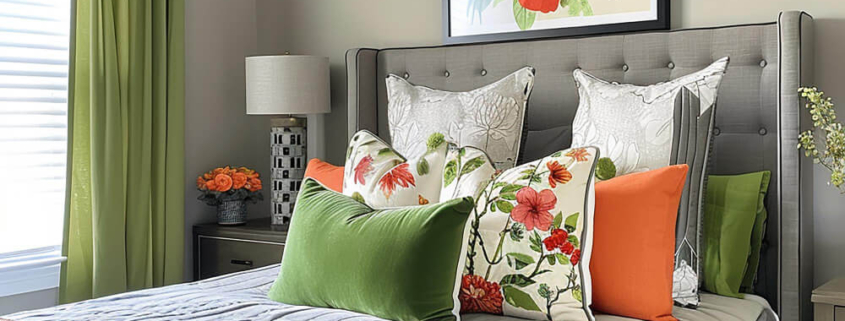Best Colors for Small Bedrooms: How to Make the Most of Your Space
Choosing the right color for a small bedroom is essential to making it feel larger, more inviting, and serene. The right shades can create a sense of openness, warmth, and relaxation, while the wrong tones may make the space feel cramped and uninviting. Here’s a guide to help you choose the best colors for a small bedroom to maximize the feeling of space and comfort.
1. Light Neutrals
Light neutral colors like soft whites, off-whites, beige, and light gray are excellent choices for small bedrooms. These shades reflect more light, making the room appear brighter and more spacious. Neutral tones create a calming, peaceful atmosphere and can complement almost any style of decor. They also provide a timeless background for colorful accents and furniture.
2. Soft Blues and Greens
Cool shades of blue and green are perfect for creating a tranquil and airy feel in a small bedroom. Lighter tones like pale blue or seafoam green promote relaxation and help to open up the space. These colors work well with natural elements like wood and plants, giving the room a refreshing, nature-inspired vibe. You can experiment with accent walls or softer tones to maintain a serene ambiance.
3. Soft Grays
A soft gray can be a versatile and modern option for a small bedroom. Light gray shades can make the room feel sophisticated while still feeling open and spacious. Combine gray with bright whites or soft pastels for a harmonious, minimalist look. Darker grays may work for accent walls, but be careful not to overwhelm the space with too much darkness.
4. Pale Pinks and Lavenders
Soft pastel colors, like pale pink and lavender, can add a touch of warmth and personality to a small bedroom without making it feel crowded. These shades are gentle and soothing, offering a relaxing environment for sleep. When paired with whites or other light neutrals, pastels can create an elegant, airy look perfect for smaller spaces.
5. White
Classic white is one of the best choices for a small bedroom. It creates a bright, open atmosphere and makes the space feel much larger than it is. White walls allow natural light to bounce around the room, creating an airy, spacious feel. To avoid a sterile look, add warmth through wood accents, textiles, or colorful accessories.
6. Light Earthy Tones
Soft earthy tones like light taupe, sandy beige, or soft terracotta can warm up a small bedroom without making it feel cramped. These colors create an inviting and cozy atmosphere, perfect for small spaces where comfort is key. Earth tones work well with natural materials such as wood, linen, and cotton.
7. Avoid Dark, Bold Colors
While dark and bold colors can add drama to a room, they tend to make small spaces feel even smaller. Colors like deep reds, navy blues, or dark browns can overpower a tiny room and make it feel cramped. If you love bold colors, use them sparingly in accent pieces or on a single wall, paired with lighter tones to balance the space.
8. Opt for Accent Walls or Features
If you want to add depth and character to your small bedroom, consider using an accent wall or colorful features in moderation. A single feature wall in a contrasting shade can create a focal point without overwhelming the room. Pairing bold colors with softer shades on other walls helps balance the overall look.



Leave a Reply
Want to join the discussion?Feel free to contribute!